Yoga for Autism: 9 Yoga Poses for Kids with Autism
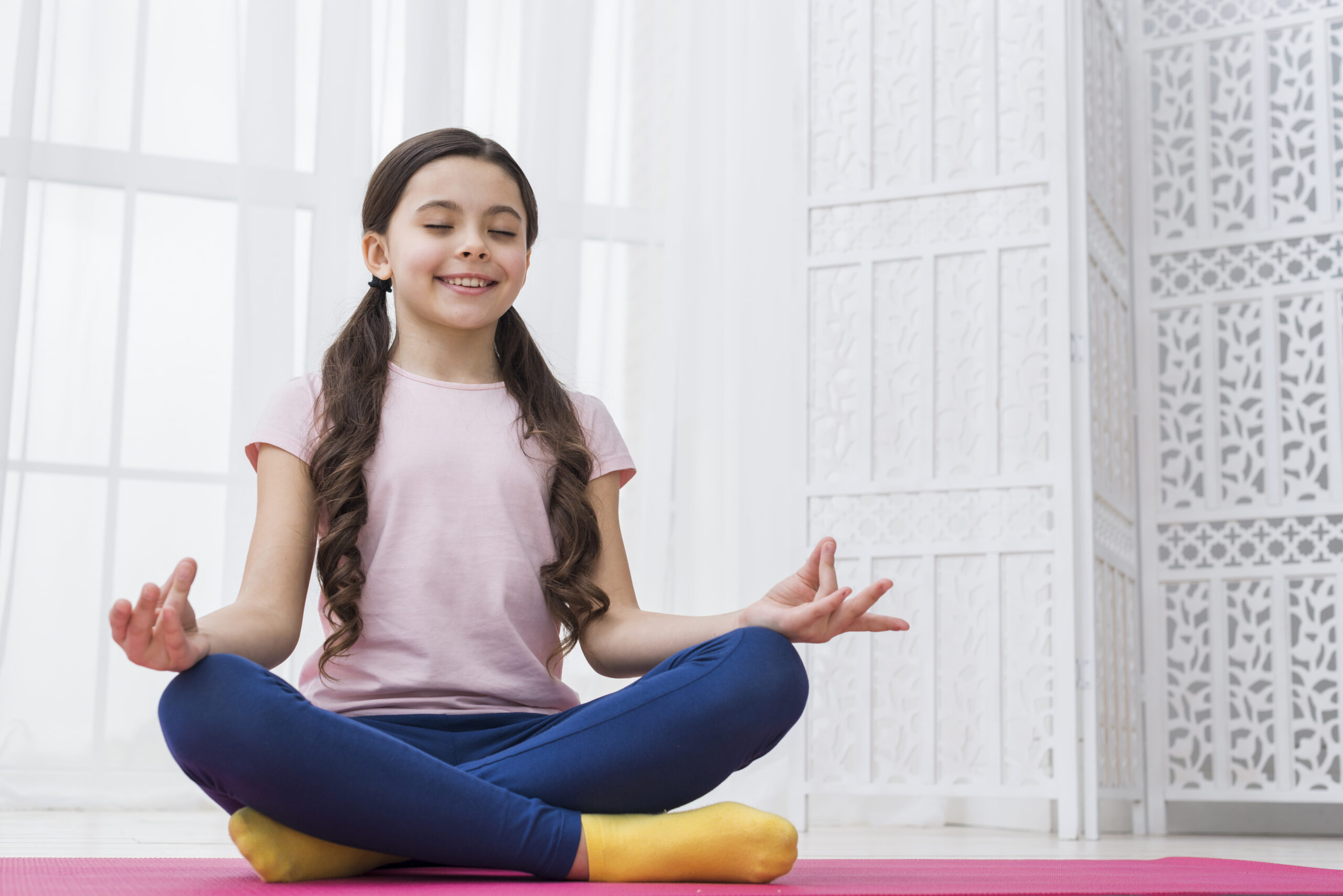
As per the reports of ETHealthWorld, more than 18 million people in India are currently diagnosed with autism, including around 1% to 1.5% of children. While there’s no single cause that can be labelled as the main reason, ASD (Autism Spectrum Disorder) is generally attributed to several kinds of genetic and epigenetic issues. Due to such a complex nature, researchers and professional experts are always searching for new and effective ways to help kids face the challenges of autism. However recently, yoga for autism has become a rapidly preferred tool that not only acts as a coping tool but also addresses their emotional and physical symptoms.
Children suffering from the challenges of ASD often struggle with communication, social behaviour skills and anxiety. In addition, low self-esteem and lack of confidence are a few other byproducts of such struggles. Through this article, we will cover such associated conditions and answer questions like ‘how can yoga help autistic child?’ or ‘what yoga poses are good for autism?’
Symptoms and Associated Conditions with ASD
There are several associated and co-occurring conditions that might appear among kids alongside autism such as social deficits, language impairment, repetitive behaviour, etc. On the other hand, physical challenges like chronic constipation, abdominal pain, stomach bloating and other gastrointestinal symptoms are equally present as well.
But, what Ayurveda says about autism? Is yoga good for people with autism? Sensory yoga for autism offers structured and focused activities or poses that address all these kinds of challenges or symptoms. However, it’s important to remember that children with ASD generally require more patience from parents as well as yoga teachers. For now, let’s have a look at some of the asanas or poses that are considered ideal in yoga for autism.
Practise the Following 9 Yoga Asanas for Autism
Since yoga incorporates whole-body movements and stimulates the entire nervous system, it’s one of the few tools that allows kids with ASD to process information calmly. Here are a few yoga asanas that are often considered ideal for kids facing symptoms or the associated conditions of ASD:
Vrikshasana (Tree Pose)
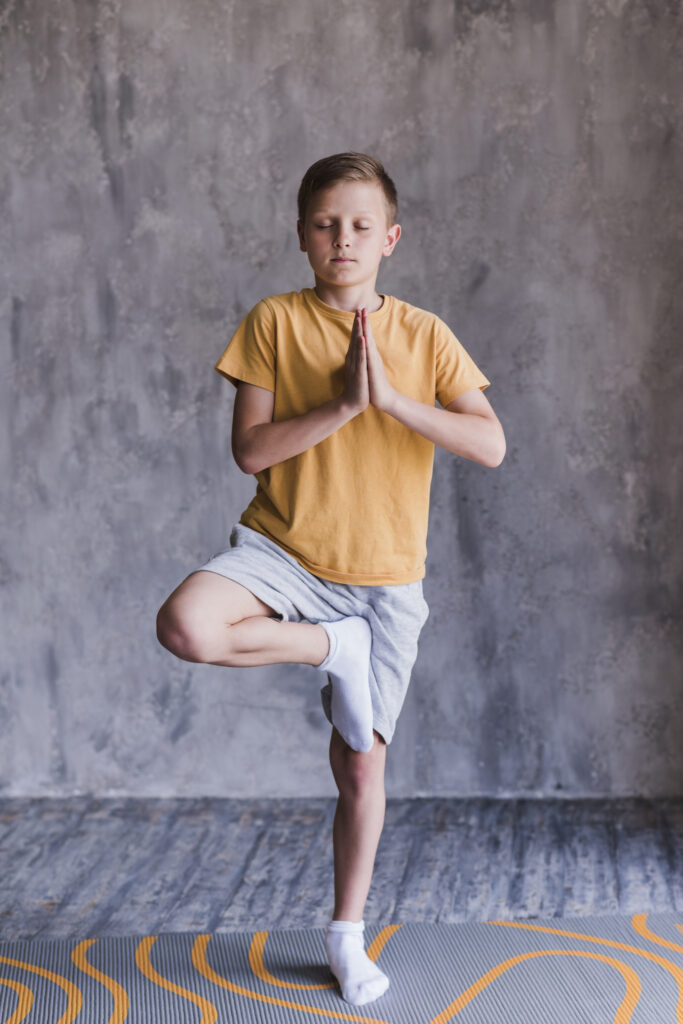
Tree Pose or Vrikshasana is often considered the children’s favourite pose in yoga for autism. While developing balancing skills, this yoga pose promotes deep concentration and calms the mind by stimulating the entire nervous system.
Benefits
- Strengthens core muscles and refines balancing skills.
- Helps in developing concentration skills.
- Improves the natural body posture.
Prasarita Padottanasana

One of the easiest poses to learn in yoga for autism, Prasarita Padottanasana helps strengthen our spine as well as calms our mind. In addition, the asana also has quite a few variations and modifications based on the learner’s age and abilities.
Benefits
- Stimulates the entire nervous system and provides relief from stress or fatigue.
- Tones abdominal organs.
- Strengthens and stretches the spine as well as leg muscles.
Shalabhasana (Locust Pose)
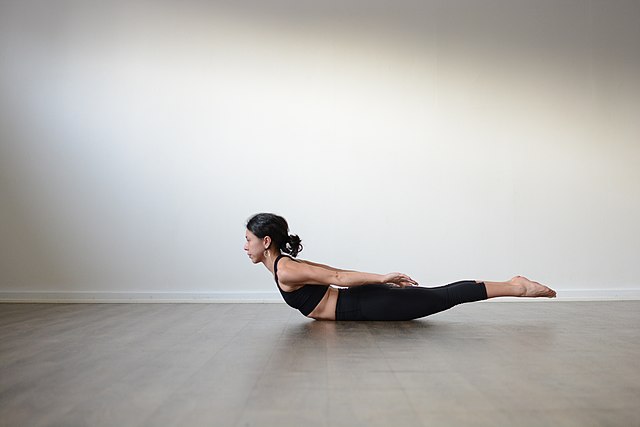
Shalabhasana or Locust pose is another helpful asana in yoga for autism that’s practised by lying on the abdomen. Generally done in a reclining position, this asana encourages metabolic activities in the body which is quite an important aspect of any child’s development.
Benefits
- Stretches the vertebral column and improves the circulation of blood.
- Stimulate the entire nervous system and improve metabolic activities.
- Bolsters thigh and leg muscles while also strengthening the lower back muscles.
Ananda Balasana (Happy Baby Pose)
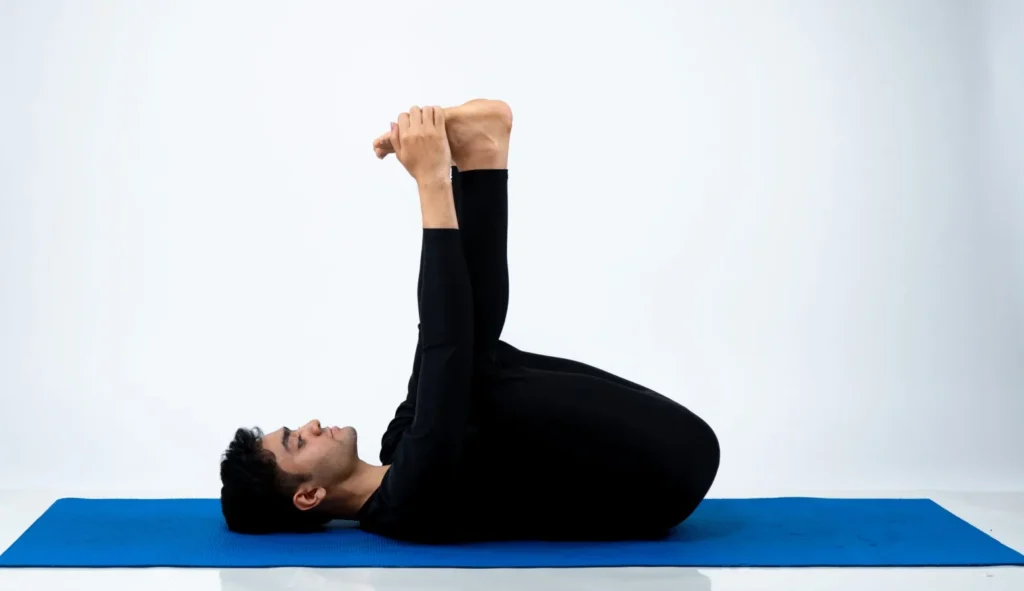
A great asana for beginners or new learners, Ananda Balasana is another pose in yoga for autism that benefits the abdominal organs. Also, there are several variations to this yoga pose that can be modified for kids, depending on their age and abilities.
Benefits
- Stretches the groins, inner thighs and hamstrings.
- Massages abdominal organs and improves the functioning of kidneys.
- Activates the solar plexus and sacral chakra.
Setu Bandh Sarvangasana (Bridge Lock Pose)
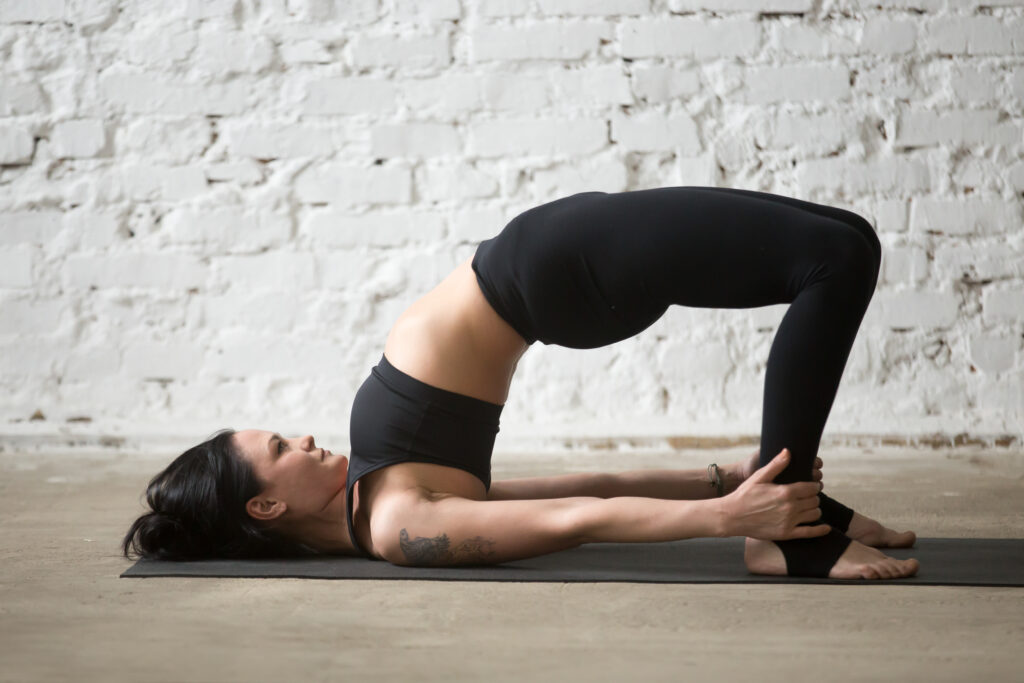
Also known as the Bridge Lock Pose, this asana in yoga for autism focuses on promoting blood circulation throughout the whole body. As an inversion pose, it’s quite beneficial for reducing stress or anxiety and improving your sleep cycle or insomnia issues.
Benefits
- Promotes digestion by massaging the digestive organs.
- Reduces insomnia, fatigue and mental stress.
- Helps in regulating the functions of the thyroid gland.
Navasana (Boat Pose)
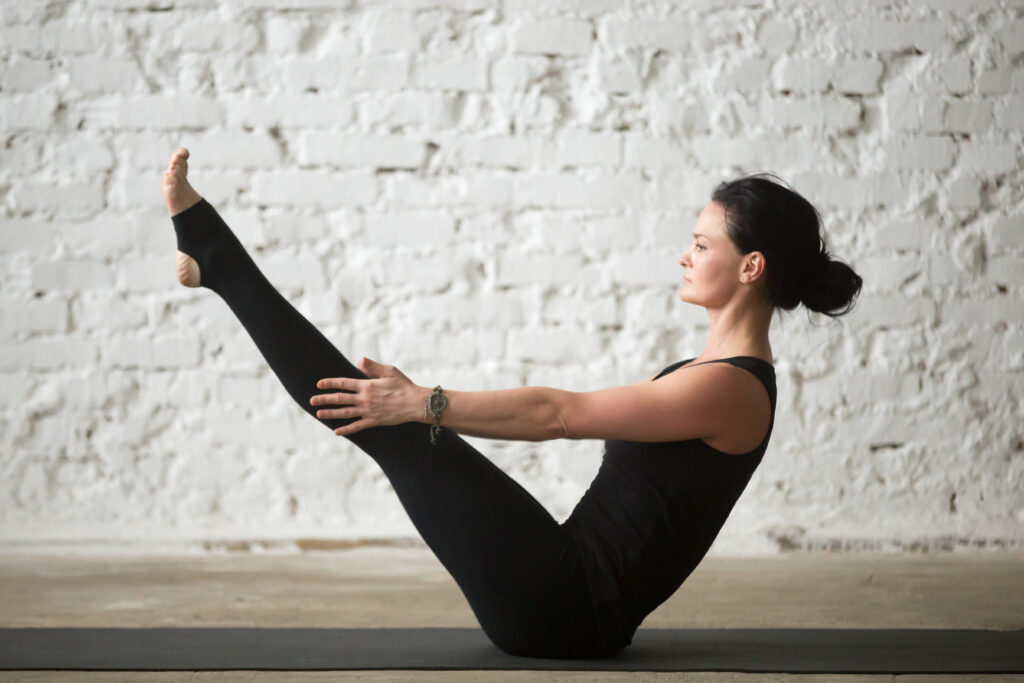
Since ASD carries various gastrointestinal issues, asanas like Navasana in yoga for autism are quite effective and beneficial. When practised regularly, this pose stretches the entire body from neck to feet and tones abdominal muscles as well.
Benefits
- Improves the functioning of endocrine glands.
- Enhances the health of kidneys and lungs.
- Helps with bettering your blood circulation.
Pawanmuktasana (Wind Release Pose)
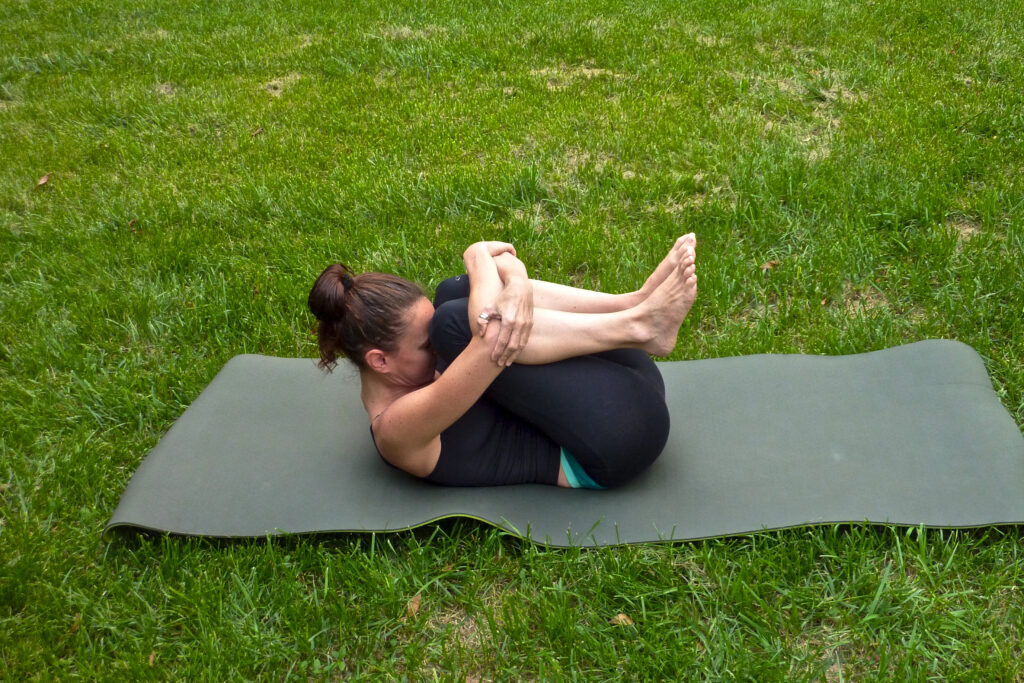
One of the best yoga asanas that offers relief from various digestion-related issues, Pawanmuktasana is a widely popular pose in yoga for autism. Unlike any other pose, it promotes regular bowel movements and helps in getting rid of acid reflux issues.
- Cures digestive disorders by massaging abdominal organs.
- Strengthens back and abdominal organs.
- Increases blood circulation throughout the whole body.
Simha Pranayama (Lion Breath)
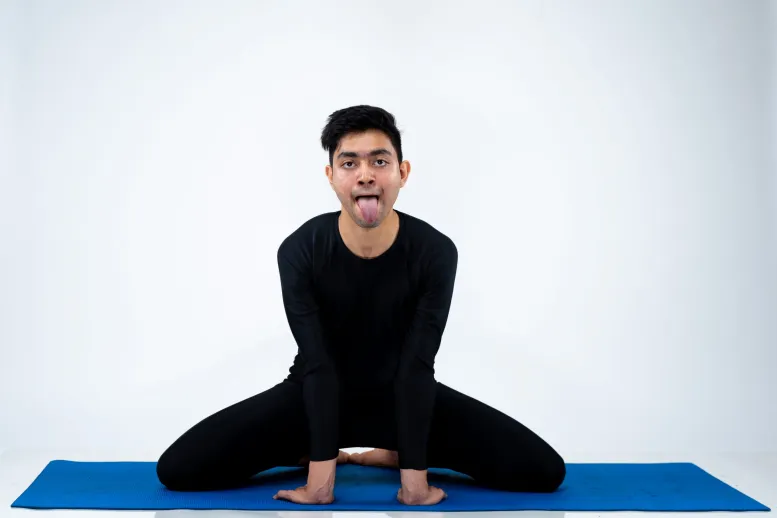
Simha Pranayama or Lion Breath is a powerful breathing asana in yoga for autism that can help relax your mind, improve vocal cords and boost your confidence. Since various kids with ASD also suffer from symptoms like repetitive or rigid language, such poses can greatly benefit them.
Benefits
- Improves the strength of the lungs, vocal cords and diaphragm.
- Stimulates the entire nervous system and reduces negative thoughts.
- Encourages blood circulation throughout the whole body.
Bhramari Pranayama (Humming Bee Breathing)
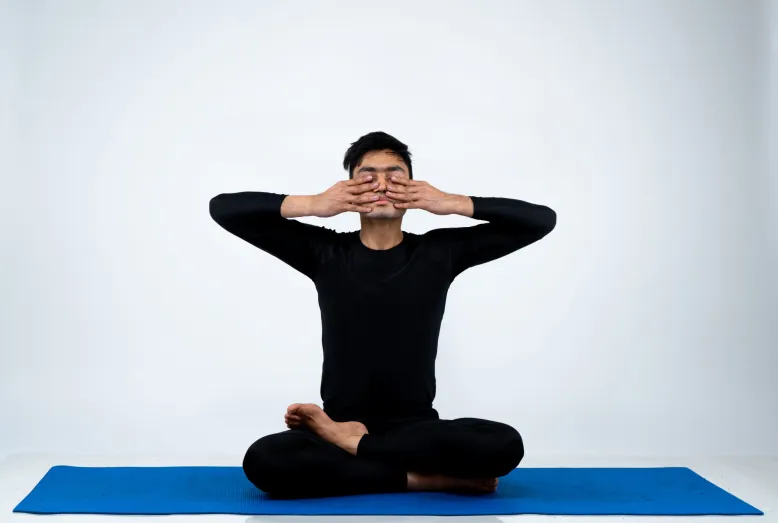
One of the few asanas in yoga for autism that create a soothing and healing effect, Bhramari Pranayama is an ideal yoga pose for every kid. The sound of the humming is directed to create a healing vibration that releases mental tension and reduces the body’s sensory inputs.
Benefits
- Helps in calming the mind and reducing anxiety.
- Stimulates the nervous system and sharpens your focus.
- Lowers high blood pressure and reduces hypertension.
In Conclusion
It’s pretty conclusive that through the regular practice of yoga, the development of social skills and improvement in overall health is easily possible for kids suffering from ASD. Since there’s no specific cure, yoga for autism can serve as a sustainable tool by directly addressing the associated conditions or other symptoms.
Above all, it’s quite important to remember that parents or yoga instructors should remain quite patient. So, sign up for our yoga classes with your little ones today and let’s start the journey of integrating your kids into the world around them.


